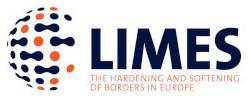All Together or All Alone? How Demographic and Digital Trends affect Socialisation and Isolation at Work
Research Focus and Methodology
Timo’s research focuses on how individuals at work deal with workplace loneliness, an issue that is both increasing in its prevalence and relevancy. His dissertation is split into three different research projects and papers. The first paper investigates how demands from the work and home domain can lead to workplace loneliness during remote work. His second paper focuses on a longitudinal analysis of workplace loneliness levels over the course of the COVID-19 pandemic. The final paper deals with workplace loneliness on a more individual level and looks at how segmentation preferences (i.e., how employees differentiate their personalities between private and work life) relate to workplace loneliness. Timo’s primary research method has been quantitative, using survey data of European employees. He designed most surveys for the studies himself and used external panel services to get access to between 200 and 600 white-collar working individuals from Europe in different sectors. Timo also collaborated with the “future of work” lab at Konstanz University for the data collection. Traditional statistical techniques and more advanced ones, such as latent growth curve modelling were then used to get unique insights into the issue of workplace loneliness in the current work climate
Relation to Borders
The LIMES overarching topic of ‘borders’ has been important throughout Timo’s research. Workplace loneliness itself creates borders between employees and is detrimental to employee well-being. Indeed, loneliness has been referred to as a modern day mental “pandemic” even before the recent health crisis. In addition, the context of the research was remote work during or directly after the COVID-19 pandemic. As employee preferences and employer practices towards remote work and virtuality have permanently shifted as a result, this can potentially create additional mental borders between employees that were not there previously.
Findings and Takeaways
In his research, Timo finds that overall, workplace loneliness is a pressing and urgent issue for organizations, especially during remote work. This first study shows that when organizations place high demands on employees during remote work, employees suffer from higher levels of workplace loneliness. In addition, even demands from the home environment can negatively influence loneliness in the workplace. By increasing support, organisations can decrease levels of workplace loneliness. The second study shows that although loneliness levels decreased starting from relatively high levels throughout the pandemic, virtuality (how much someone worked remotely) negatively influenced workplace loneliness, showing the importance of at least some face-to-face contact in the office. In addition, leadership behavior is an important factor. The third paper (results and analysis are still tentative at the time of writing) shows the importance of segmentation preference of employees on an individual level. In addition to how the organization and leaders behave, a further important factor is how employees themselves differentiate their personalities and attitudes between work and private life.
Researcher: Timo Walz (see profile)
Supervisors: Simon de Jong, Julia Kensbock, Florian Kunze (see profiles)
